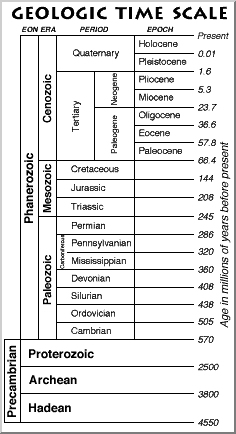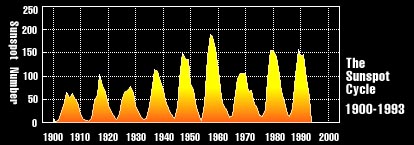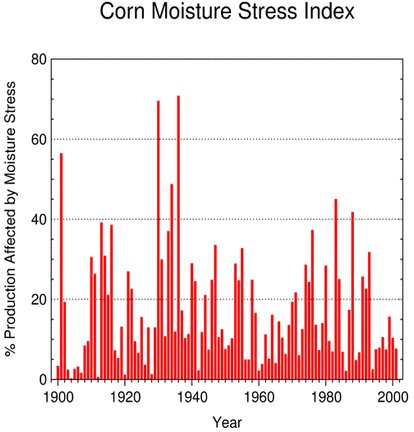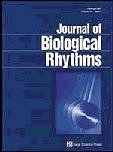it is possible that the absolutism of Egyptian dynasties was dependent on the ability of kings to determine the sidereal year in relation to the appearance of the star Sirius. Recognition of the first dynasty by the Egyptians implied a recognition of time as dating from it. ...The power of absolute kings over time and space was reflected in the pyramids which remain a standing monument to justify their confidence, in the development of mummification, a tribute to their control over eternity, and in the belief in immortality. The power of the absolute monarchy may have been weakened by the priesthood which discovered the more reliable solar year. Absolutism passed with control over time into the hands of the priesthood and checked expansion over space in the Egyptian Empire.
-Harold Innis, The Bias of Communication, 1951:66
Although with modernization the activities of individuals have become increasingly divorced from the natural rhythms--e.g., the solar, lunar, and seasonal cycles--that controlled the behaviors of their ancestors (see, for instance, Carol Moore's "Sunspot Cycles & Activist Strategies") it is important to appreciate how human cultures have overlaid their own symbolic systems of meanings and timetables atop these times of nature. Such discoveries of time may well underlie the very foundation of civilization. Here we will investigate the ways early cultures sought to synchronize the timing of the cosmos with the timing of the nomos, between the rhythms of nature and of social life.
Here's a site for those whose lives are totally divorced from natural rhythms: Watch corn grow in real-time at Iowa Farmer's Today's CornCam.
We will also consider how these natural rhythms still impact the individual, both biologically and psychologically. In The Clock of Ages John Medina likens the body to a clock store. Each cell, tissue, and organ has its own clock that determines its lifespan. These clocks, in turn, become entrained or captured within the rhythms of nature. Like some Chinese puzzle, there are clocks within clocks within clocks, which together shape our everyday experiences. Check out what they're up to at the Center for Biological Timing at the University of Virginia.
THE DAY-NIGHT CYCLE
The cycle of work and rest is evident throughout nature. Marcia Thompson and David Harsha ("Our Rhythms Still Follow the African Sun," Psychology Today, Jan. 1984:50-54) argue that our afternoon lull in productivity is a legacy of our African origins, where the hot afternoon sun put most animals in slumber beneath the trees of the savanna. Generally, it is in the morning when we engage in our most important work of the day, performing those activities necessary for the group's subsistence. Midday meals are followed by an afternoon lull--a nearly universal break time in preindustrial societies. People resume their activities in the late afternoon but at a slower pace. The conclusion of the work day brings a social time, with some variant of the cocktail hour occurring in many cultures.
Circadian Rhythms
Corresponding to the cycles of light and darkness is the body's own daily timekeeper, the circadian (from the Latin "circa," meaning about, and "diem," meaning day) rhythm, which is linked to a host of physiological processes, including hormone secretions, jet lag, and even heart attacks. Out of a growing appreciation of such body rhythms, medical researchers increasingly apply chronotherapeutic strategies to enhance their treatment effects.
THE LUNAR CYCLE
From far-northwest Greenland to the southernmost tip of Patagonia, people hail the new moon--a time for singing and praying, eating and drinking. Eskimos spread a feast, their sorcerers perform, they extinguish lamps and exchange women. African Bushmen chant a prayer: "Young Moon! ... Hail, hail, Young Moon!" In the light of the moon everyone wants to dance. And the moon has other virtues. The ancient Greek communities, Tacitus reported nearly two thousand years ago, held their meetings a new or full moon, "the seasons most auspicious for beginning business."
Everywhere we find relics of mythic, mystic, romantic meanings--in "moonstruck" and "lunatic" (Latin luna means moon), in "moonshine," and in the moonlight setting of lovers' meetings. The word "moon" in English and its cognate in other languages are rooted in the base me meaning measure (as in Greek metron, and in the English meter and measure).
Daniel J. Boorstin, The Discoverers, 1983:4
Menstrual Cycles

Of all the coincidences of personal biological times with those of the cosmos, the parallel between the 29.5 day lunar cycle with the 29.5 +/-3 day average menstrual cycle of women is one of the more intriguing. This "lunar connection" with fertility has been a nearly universal theme of folklore and ritual. While the degree of such phase locking remains a matter of scientific debate, the synchronization is still appreciated. Felicity Oswell's WombMoon Calendar recommends that it be taken advantage of as a time for self understanding and appreciation of women's connection with the natural order.
- Winnifred B. Cutler, et al., "Lunar Influences on the Reproductive Cycle in Women"
THE SEASONAL CYCLE
Since at least the time of Hippocrates, scholars have been intrigued by seasonal influences on human experiences. Researchers in biometeorology have noted, for instance:
- death rates in northern cultures peak during the winter;
- marriages peak in June and births in late summer;
- relatively high rates of winter depression;
- romantic relationships between college students tend to breakup during May/June, September, December/January, according to research of Zick Rubin, Charles T. Hill and Letitia Peplau;
- suicide rates and mental hospital admissions rise during spring and early summer.
THE MACRO RHYTHMS OF NATURE
 Beyond the rhythms of the day and year, other natural cycles affecting
the course of human activity (and history) have been detected--and have been
measured by such natural timepieces as dendrochronology.
For instance,
there are cycles
of glacial growth and decline, which have profoundly affected the migrations
and innovative technologies of our species and its predecessors, which
are perhaps caused by a wobble of our planet's axis. In the early 1980s,
John Sepkoski and David Raup, two University of Chicago paleontologists,
reported evidence of periodic
mass extinctions which eradicated upwards of 75 percent of all species
every 26 million years. One theory accounting for this regularity is the
postulated existence of a dwarf binary sister of our sun. This death star,
called Nemesis (after the Greek goddess who persecutes the excessively
rich and powerful), is hypothesized to reach its perigee every 26 million
years, when it shakes loose and hurls a hail of comets from the
Oort cloud
on the fringe of our solar system. Some of these collide with earth, filling
its atmosphere with dust that blots out the sun for months, leading to
global death.
Beyond the rhythms of the day and year, other natural cycles affecting
the course of human activity (and history) have been detected--and have been
measured by such natural timepieces as dendrochronology.
For instance,
there are cycles
of glacial growth and decline, which have profoundly affected the migrations
and innovative technologies of our species and its predecessors, which
are perhaps caused by a wobble of our planet's axis. In the early 1980s,
John Sepkoski and David Raup, two University of Chicago paleontologists,
reported evidence of periodic
mass extinctions which eradicated upwards of 75 percent of all species
every 26 million years. One theory accounting for this regularity is the
postulated existence of a dwarf binary sister of our sun. This death star,
called Nemesis (after the Greek goddess who persecutes the excessively
rich and powerful), is hypothesized to reach its perigee every 26 million
years, when it shakes loose and hurls a hail of comets from the
Oort cloud
on the fringe of our solar system. Some of these collide with earth, filling
its atmosphere with dust that blots out the sun for months, leading to
global death.
Science has given us the ultimate of temporal perspectives: the birth and death of the entire universe. There are two rival theses about the ultimate fate of the universe, both originating from the Big Bang Theory. One thesis, derived from the Second Law of Thermodynamics, sees the universe as "open," expanding for eternity and slowly sinking into a thermal equilibrium that is "heat death." In other words, the death of the universe is predestined and inevitable, in 100 billion years the energy needed to sustain life anywhere in the universe would be so dispersed as to be unusable. Death is nothing more than entropic disorder and life nothing more than entropy reduction. Time is the loss of disequilibrium between processes (such as the dissipation of electrical energy or radioactive decay).
This cosmological conception of time is only the most recent of a long line of speculations. Galileo was the first to realize that the acceleration of falling bodies was a function of time, "that the same increment of velocity was added to their speed of fall every second." His predecessors "had tended to think either that the velocity of a falling object must be constant, or that velocity was proportional to distance traveled, not time" (Richard Morris, Time's Arrows: Scientific Attitudes Toward Time, Touchstone/Simon and Schuster, 1985:12). Later, the Newtonian notion of time existing uniformly throughout the cosmos was to be overthrown by Albert Einstein's special theory of relativity. Here time became but an illusion as "it is perfectly possible for a distant event to take place in the 'past' of one observer and in the 'future' of another" (Morris, 1985:150). Currently Einstein's conception of time is being superceded by developments in quantum mechanics. According to Nobel Laureate Prigogine, the discovery of the "irreversibility problem" has led to the new insight that time is best understood as a "selection principle" and that time and uncertainty are closely related. Adds one observer, "One bewildering outcome of quantum theory has led some scientists to speculate that the entire universe, including the time in which it exists, may have been created by a spontaneous quantum fluctuation--a twitch in the nothingness that preceded it. Could a twitch in the opposite direction convert the universe back into nonexistence" ("Reality: A Grand Illusion?" The New York Times, Feb. 26, 1980)?

PREDICTING SOLAR ECLIPSES
As can be gathered, power comes to those able to predict natural events. Undoubtedly one of the most impressive of predictions cross-culturally in the ancient world involved the timing of the solar eclipse. For the Mayans, the people must have thought that even the heavens were controlled by their omniscient rulers, whose predictions of lunar cycles are off by only a matter of a few seconds many hundreds of years later.
RHYTHMS OF NATURE'S CREATURES
- The cicada story is intriguing--that 13-17-year
cycle when they emerge from the ground to mate and die.
In Erica Klarreich's "Cicadas appear in their
time" is developed the thesis that such irregular resurrections
disrupt predators.
- Is there a death gene, some biological clock that determines species' time on life's stage? A long history of human quests in locating some elixir to postpone or eliminate death was tempered with Leonard Hayflick's discovery of the finite divisions of human cells, the so-called Hayflick Limit. But there flickered hope in the cancer cells of Henrietta Lacks which, one-half century after whose host's death, live eternally on throughout the world. Could the death gene(s) be turned off? Enter telomerase and its ability to lengthen the biological clock. Listen to NPR's "Talk of the Nation's" "Merchants of Immortality" (aired June 4, 2003), featuring an interview with Stephen Hall, author of Merchants of Immortality: Chasing the Dream of Human Life Extension.
- Are you a believer or not in biorhythms?
DON'T FORGET
March is National Chronic Fatigue Syndrome Month;
May is Lupus Awareness Month;
September 21 is World Alzheimer's Day;
November is National Alzheimer's Disease Month (a designation first signed into law in 1983 by, ironically, victim Ronald Reagan).
For more calendrical observances of human maladies, see the 2008 National Health Observances



